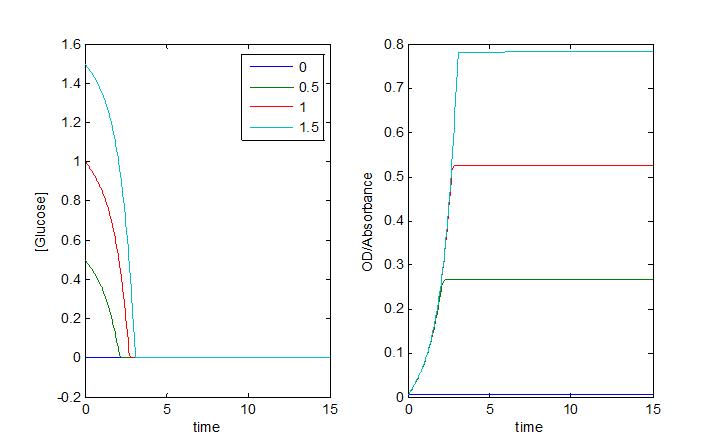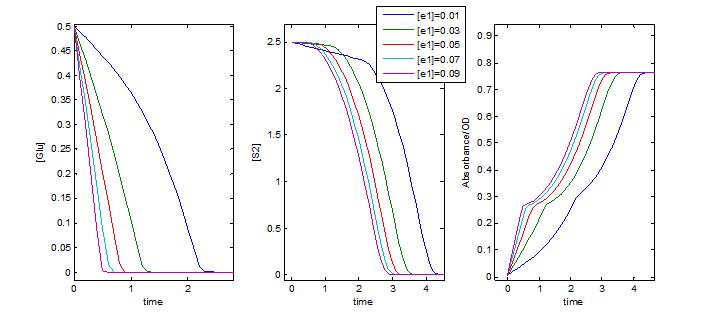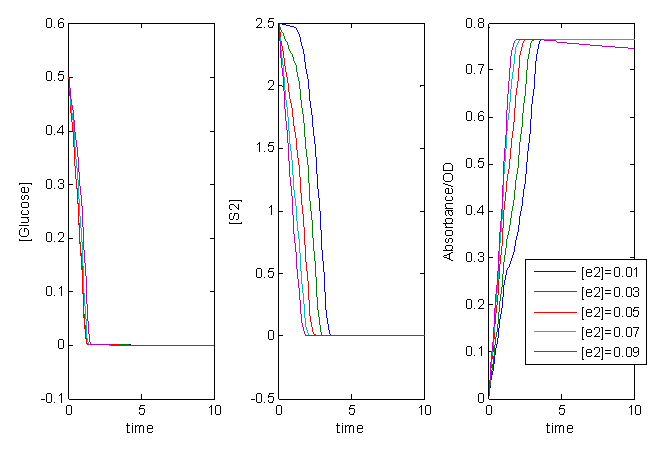Team:Imperial College London/Drylab/Autoinduction/Simulations
From 2009.igem.org

- Overview
- Kompala et al model
- Kompala et al simulations
- Keasling et al model
- Kremling
Kompala et al simulations:
1. Variation in initial concentration of glucose in the medium with a very small concentration of secondary carbon source

The larger the amount of glucose present immediately in the medium, the longer it takes for it to be used up and the population grows more before it reaches a point of saturation. This is an example of resource limited growth. It is not diauxic growth because there is a low concentration of secondary source, so it is not sufficient to start a second exponential growth phase in the bacterial population.
2. Fix the initial concentration of glucose in the medium and sweep through different initial concentrations of secondary carbon sources

Now, we fixed the primary source [Glu]= 1 and varied [S2] (Secondary source) from 1 to 6. The lower the amount of S2, the shorter the second exponential phase and faster saturation of cell growth.
3. Variation of initial concentration of e1 (enzyme metabolizing primary source S1-glucose)

As expected, a higher e1 concentration initially, means faster consumption of glucose so we hit the 2nd exponential phase quicker than with a low concentration of the enzyme. Furthermore, if there is less e1 initially, it takes longer to consume S2 by consequence, so we can see longer delays in reaching the lag phase, and consequently, the second exponential phase.
3. Variation of initial concentration of e2 (enzyme metabolizing secondary source S2)

The less e2 present, the longer the lag phase and the slower the second exponential growth phase. However, as amounts of e2 are increased, the lag phase is not visible and the transition between primary and secondary growth is faster. In theory, e2 should only affect the secondary exponential phase. In practice, enzymes compete and the amouns of e2 also affect the metabolism of the primary source, hence why the glucose metabolism is changed too.
 "
"



